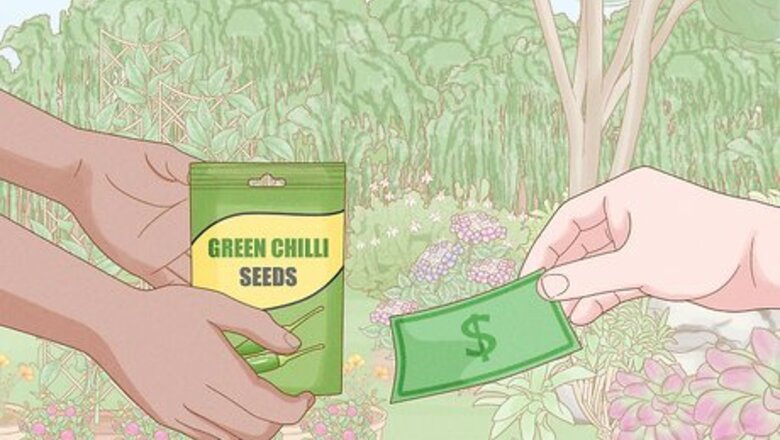
views
Sowing the Seeds
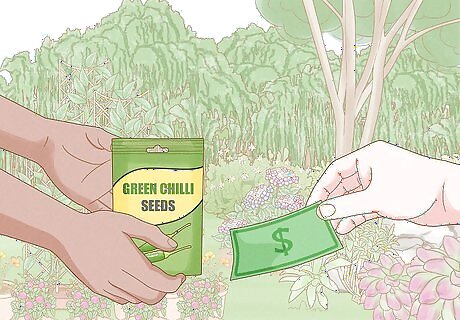
Purchase a packet of seeds or use seeds from an overripe chili. Look for a packet of chili seeds at your local nursery or garden store, as well as online. If you already have chilis at home, wait until they’re overripe and cut them in half to remove the seeds. Once these seeds are dried out, you can plant them in the soil. An overripe chili will be red and beginning to shrivel a bit. Seeds from a chili that isn't ripe yet may not germinate because the seeds aren't mature. Dry the seeds by laying them out on a paper towel for several hours.
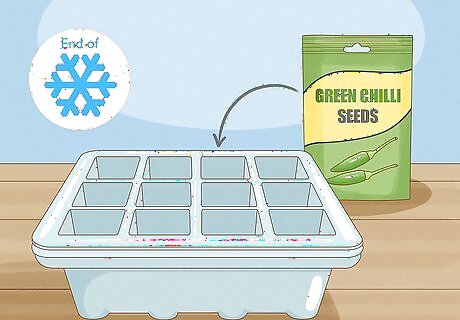
Plant the seeds at the end of winter for the best results. Most people start their seeds indoors at the end of March as it begins to turn warm, or you can wait until April. It’s best if the seeds start off indoors so that the plant gets a head start before you plant it outdoors. Chiles don't do well in frost, which is why it's important to wait until the threat of frost has completely passed for the season before you plant them outside. It takes the seeds 2-4 months to grow and produce fruit, which is why it's important to start early.
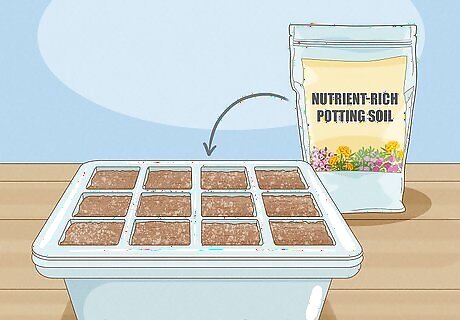
Fill a seedling tray with fertile potting soil. Choose a nutrient-rich potting soil from your local garden store and fill each cell of a seedling tray with the soil. Fill the cells roughly three-fourths of the way full with the soil, and make sure the cells have holes at the bottom for drainage. Seedling trays are perfect for sowing seeds as you can fill each 1 in (2.5 cm) cell with individual seeds and monitor their growth easily. Look for a seed starter soil blend, if desired.
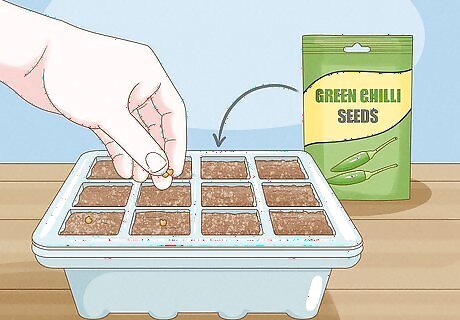
Place 3 seeds in each tray cell, spreading them apart. While you can choose to only put 1 seed in each cell, it’s best to put 3 in case the others don’t sprout. Lay them on the soil gently, spacing each of the seeds a little bit apart in each cell so that they have room to grow. You don’t need to press the seeds down in the soil. Use your fingers to place each seed in the soil.
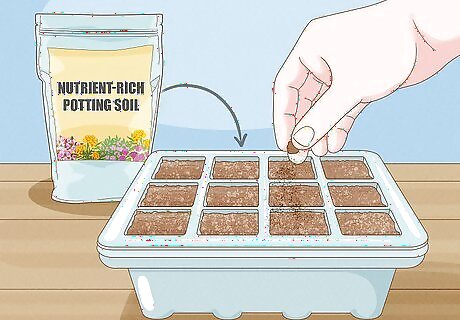
Cover the seeds with a thin layer of potting soil. Use the same potting soil that you used to fill in the seed tray and sprinkle a thin layer over the seeds. This layer should be just thick enough to give the seeds protection against wind or water while allowing the seeds to grow up through it easily. When you water the seeds, the thin layer of soil on top should prevent the water from displacing the seeds. Still, water the seeds gently with a spray bottle or watering can to avoid disrupting them as they start.
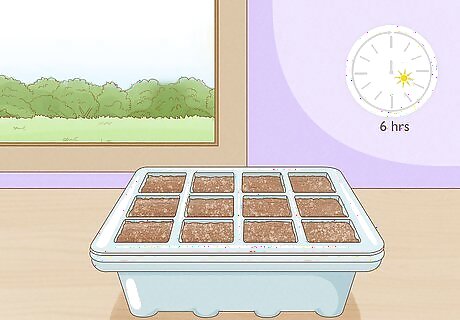
Set the seed tray in indirect sunlight indoors. Avoid placing the seed tray in direct sunlight right after you plant them, and instead set your seed tray on a windowsill or on a table with indirect sunlight. It’s okay if the spot is sometimes shady, but the location should stay warm so the seeds will germinate. Make sure the seeds get at least 6 hours of indirect sunlight a day. If your indoor conditions aren't warm or bright enough, use a seed heating mat and a grow light, available from most garden stores. Consider using an indoor plastic greenhouse to help trap heat so the seeds can germinate.
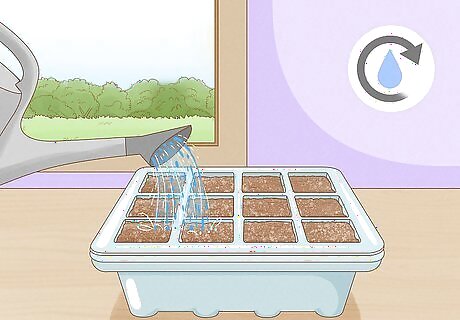
Water the seeds, checking the soil daily to ensure it’s damp. Give the seeds a nice watering right after planting them, and then check the soil each day to ensure that it’s still damp. Be careful not to overwater the soil, as chili plants don’t like excessive amounts of water. If you press on the soil and it still feels light and airy yet wet, this is perfect; if you press on the soil and your finger sinks into it and moisture squeezes out, it’s too wet.
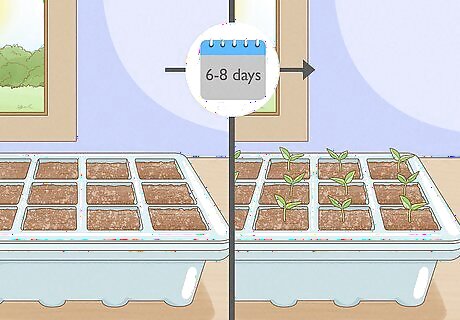
Wait 6-8 days for the seeds to germinate. Continue checking on the seeds to make sure the soil is damp and it’s getting enough sunlight. After 6-8 days, you should see little green sprouts coming up from the soil, indicating that your seeds have germinated.
Transplanting the Seedlings
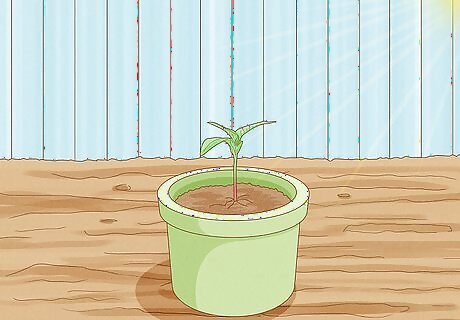
Move the plant to a sunnier spot after the seeds have germinated. Once the seeds have sprouted, it’s safe to move the plant to a sunnier spot with more direct light. Keep checking the soil to make sure the plant doesn’t dry out now that it’s in a warmer location. A warmer spot might be in a sunroom or right in front of a sunny window.
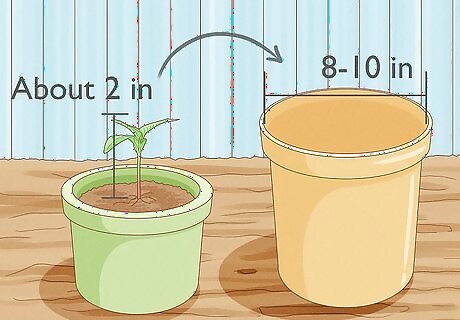
Transfer the plant to a larger pot once the seedlings are 4 cm (1.6 in) tall. An 8–10 in (20–25 cm) pot works best, though you can use one that’s a bit smaller and transfer the plant again later on, if needed. When you move the plant to the larger pot, add in some fresh soil and water the soil well once you’re finished. It should take roughly 1 month for the seedlings to grow tall enough to be transplanted. Feel free to place this pot outdoors instead of just inside the house.
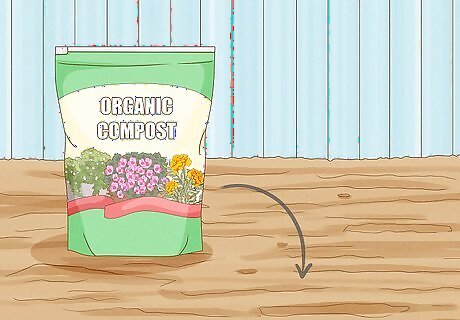
Use a well-draining, fertile soil. You can find nutrient-rich soils at a garden or nursery store. If desired, add a little bit of organic compost to the soil that will keep your chili plant healthy and happy. Check the instructions on your compost to know how much to add to the soil.
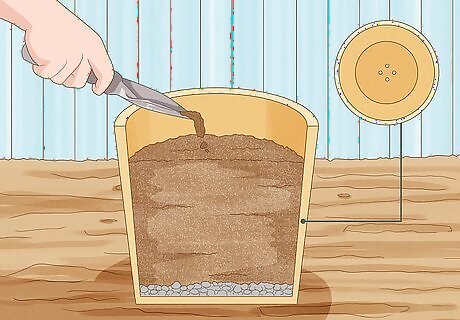
Make sure the pot has excellent drainage. One way to help ensure the water drains well is to sprinkle coarse gravel at the bottom of the pot. This makes it easier for the water to drain out and the pot’s drainage holes won’t get clogged with soil as easily. Always check your pot to make sure it has adequate holes for draining. If you’re setting the plant indoors on a table or windowsill, place a dish or tray underneath the pot to catch any excess water.
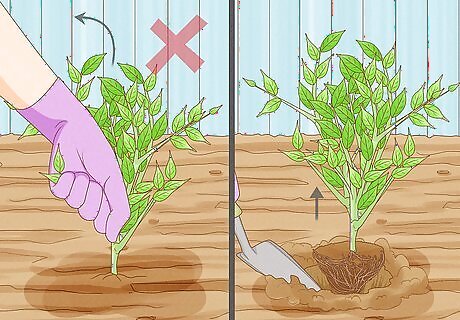
Avoid damaging the roots when transferring the plant. Be super careful not to pull the plant out of the cell tray and instead use a small shovel to gently dig around the roots to loosen them from the soil. Move the entire root ball into the new soil and pot, covering the roots with soil so that they’re covered up again. If you're worried about damaging the roots with the shovel, use a spoon to gently move the soil.
Maintaining Your Plants
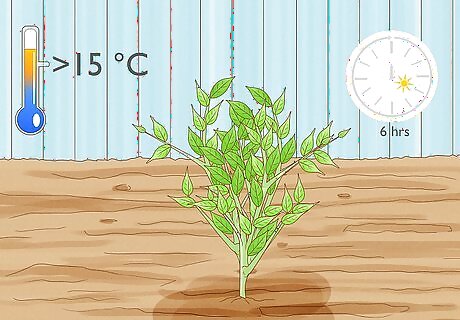
Ensure the chili plant gets at least 6 hours of sunlight a day. Keep the plant in a warm, sheltered spot, such as on a windowsill. 6 hours of sunlight a day is the minimum amount of light needed for them to grow, though more sunlight is better. Wherever you place your chili plant, make sure the temperature doesn’t drop below 15 °C (59 °F). Full sunlight is required to grow peppers, so you want to keep them outdoors for as long as possible.
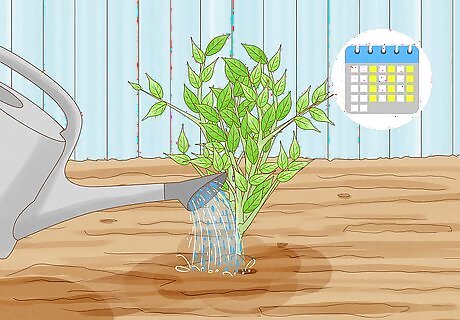
Water the plant 2-3 times a week. It’s okay if the plant gets a little dry in between the watering days, as chili plants like to dry out a bit. When you water the soil, give it a nice, thorough watering and make sure the soil is still damp once you’re finished. If the soil is mushy or water is constantly draining from the pot, this is a sign that you’re overwatering the plant.
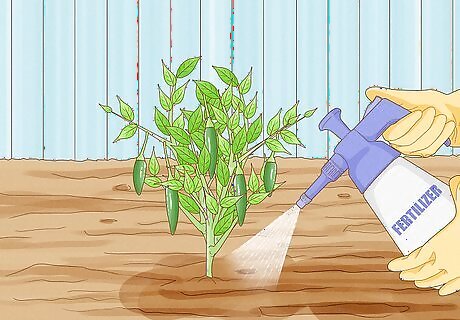
Give the plant a liquid fertilizer once it starts producing fruit. If you want to help your plant grow, buy an organic fertilizer from a garden store or online. Follow the directions on the fertilizer to feed the plant every 3 weeks or so once you see chilis starting to grow from the plant. The liquid fertilizer will give even more nutrients to the plant. Look for a fertilizer that's geared toward fruit production.
Harvesting Green Chiles
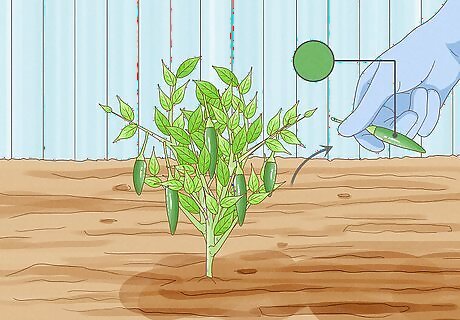
Harvest the chiles when the fruit is green. After roughly 2-3 months, green chilis will begin to grow from the plant. When you’re satisfied with the size of the chilis, it's time to harvest them. If you want green chilis, remember to cut them off before the chilis start to turn red. Chiles will turn red the longer they’re left on the plant, and their spiciness will increase with time as well. They'll begin turning red several weeks after the green chiles are fully grown.
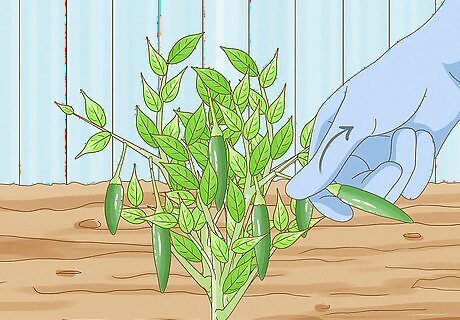
Look to see if the chiles come off of the plant easily. This is a sign that they're ripe. If you pull on the chili pepper and it's very difficult to remove from the plant, it's best to wait longer for it to continue growing and ripening. Pull on the plant gently to avoid damaging it.
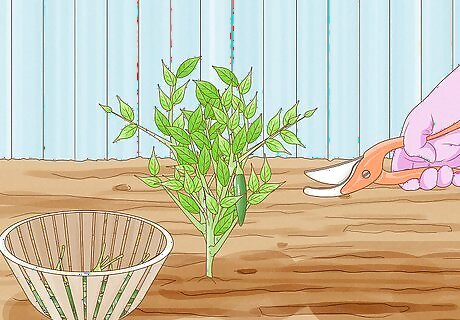
Use garden shears or a knife to harvest the chiles. Take the knife or garden shears and cut the chili off at its green stem, right above the top of the physical chili. Do this to all of the chiles that you plan on harvesting. Cut the chiles off when the plant is dry as opposed to wet to avoid spreading diseases.
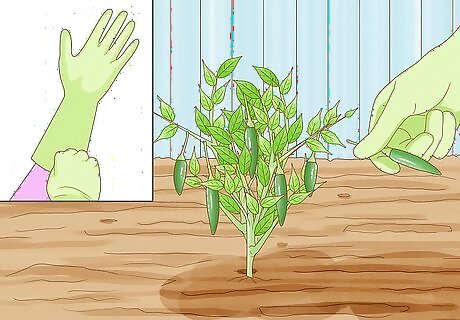
Consider protecting your hands when dealing with the chili peppers. The oils from the peppers can irritate your skin, and especially your eyes. To avoid getting the hot pepper oils on your hands, wear gardening gloves to protect them. It's also a good idea to wash your hands right after touching the green chiles.




















Comments
0 comment